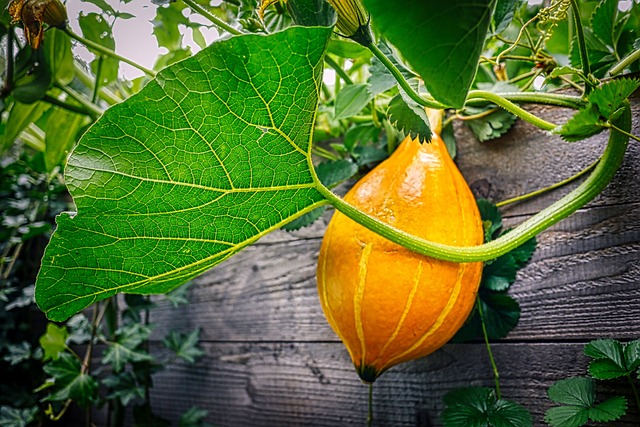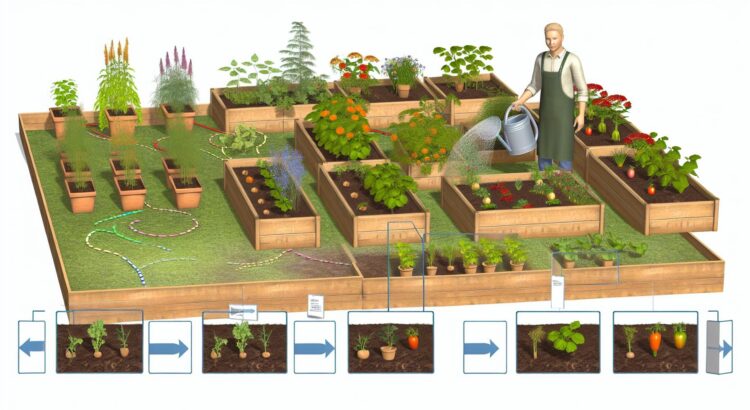Gardening in raised beds has become increasingly popular among both novice and experienced gardeners, and for good reason. The benefits of raised bed gardening are numerous, from improved soil quality to better drainage and easier access for planting and harvesting. In this article, we will explore the essentials of raised bed gardening, including its many benefits, how to set up a raised bed, and tips for success. Whether you’re a seasoned gardener looking to try something new or a beginner eager to get your hands dirty, this guide will provide you with all the information you need to start your own raised bed garden and reap the rewards of this efficient and productive gardening method.
Table of Contents
- The Benefits of Raised Bed Gardening: A Complete Overview
- Setting Up Your Raised Bed Garden: Step-by-Step Guide and Tips
- Maximizing Your Raised Bed Garden: Expert Planting and Maintenance Recommendations
- Q&A
- Final Thoughts
The Benefits of Raised Bed Gardening: A Complete Overview

The Benefits of Raised Bed Gardening: A Complete Overview
Raised bed gardening offers a multitude of benefits for both novice and experienced gardeners. One of the main advantages is the improved soil quality, as raised beds allow for better drainage and aeration. This can lead to healthier plant growth and higher yields. Additionally, the elevated nature of raised beds makes them more accessible, reducing the need for bending and kneeling, which can be especially beneficial for individuals with physical limitations.
Setting up a raised bed garden is relatively straightforward, making it an ideal option for those with limited space or poor soil quality. To get started, simply choose a suitable location, construct the bed, and fill it with a nutrient-rich soil mixture. Raised beds also offer better weed control and can help to deter pests, leading to a more low-maintenance gardening experience. To maximize the benefits of raised bed gardening, consider incorporating companion planting and crop rotation strategies to optimize space and promote overall plant health.
In addition to the practical benefits, raised bed gardening can also add aesthetic appeal to your outdoor space. With a wide variety of materials and designs to choose from, you can customize your raised beds to complement your existing landscaping and create a visually pleasing garden area. Whether you’re a seasoned gardener looking to expand your growing space or a beginner seeking an accessible and productive gardening method, raised bed gardening is a versatile and rewarding option.
Setting Up Your Raised Bed Garden: Step-by-Step Guide and Tips
Setting up a raised bed garden can be a rewarding and efficient way to grow your own fruits, vegetables, and flowers. Whether you’re a seasoned gardener or just starting out, a raised bed garden offers numerous benefits, including improved soil quality, better drainage, and easier access for planting and harvesting. Follow this step-by-step guide and tips to set up your own raised bed garden and enjoy the many advantages it has to offer.
**Step 1: Choose the Right Location**
– Select a sunny spot with at least 6-8 hours of direct sunlight per day.
– Ensure the area has access to water and is level to prevent water runoff.
**Step 2: Build or Buy Your Raised Bed**
– Construct a raised bed using rot-resistant lumber, such as cedar or redwood.
– Alternatively, purchase a pre-made raised bed kit for convenience.
**Step 3: Prepare the Soil**
– Fill the raised bed with a mixture of topsoil, compost, and organic matter for nutrient-rich soil.
– Consider adding a layer of mulch to help retain moisture and suppress weeds.
**Step 4: Plant Your Garden**
- Choose plants that are suitable for your climate and the amount of sunlight in your chosen location.
– Space plants according to their specific requirements and water them regularly.
By following these steps and tips, you can create a thriving raised bed garden that will provide you with a bountiful harvest and a beautiful outdoor space to enjoy.
Maximizing Your Raised Bed Garden: Expert Planting and Maintenance Recommendations
Raised bed gardening offers numerous benefits, including improved soil drainage, better control over soil quality, and reduced strain on the gardener’s back. Setting up a raised bed garden is relatively simple and can be done with a variety of materials, such as wood, concrete blocks, or even recycled materials. To maximize the potential of your raised bed garden, consider the following expert planting and maintenance recommendations:
**Planting Recommendations:**
– Choose plants that are well-suited for raised bed gardening, such as vegetables, herbs, and flowers.
– Consider companion planting to maximize space and deter pests.
- Utilize vertical gardening techniques to make the most of limited space.
**Maintenance Recommendations:**
– Regularly check for pests and diseases, and take prompt action to address any issues.
– Keep the soil well-amended with organic matter to ensure optimal plant growth.
– Water consistently, paying attention to the specific needs of the plants in your raised bed garden.
By following these expert recommendations, you can ensure that your raised bed garden thrives and produces a bountiful harvest throughout the growing season.
Q&A
What are the benefits of raised bed gardening?
**Raised bed gardening offers several benefits, including improved soil drainage, better control over soil quality, reduced weed growth, and easier access for planting, watering, and harvesting. Additionally, raised beds can help extend the growing season and provide better aeration for plant roots.**
How do I set up a raised bed garden?
**To set up a raised bed garden, start by selecting a location with adequate sunlight and level ground. Then, build or purchase a raised bed frame and fill it with a mixture of topsoil, compost, and other organic materials. Make sure the bed is properly watered and consider adding a layer of mulch to retain moisture.**
What type of soil should I use for a raised bed garden?
**The ideal soil for a raised bed garden is a well-draining, nutrient-rich mixture that includes topsoil, compost, and organic matter. It’s important to avoid using heavy clay or sandy soils, as they can hinder plant growth. Consider testing the soil pH and adjusting it as needed for optimal plant health.**
What plants are best suited for raised bed gardening?
**A wide variety of plants can thrive in raised bed gardens, including vegetables, herbs, flowers, and small fruits. When selecting plants, consider their mature size, sunlight requirements, and compatibility with the local climate. Some popular choices for raised bed gardening include tomatoes, peppers, lettuce, and strawberries.**
How do I maintain a raised bed garden?
**Regular maintenance is key to a successful raised bed garden. This includes watering as needed, adding organic mulch to retain moisture and suppress weeds, and monitoring for pests and diseases. Additionally, periodic soil testing and amending can help ensure the continued health of your plants.**
What are common issues and troubleshooting tips for raised bed gardening?
**Common issues in raised bed gardening can include poor drainage, nutrient deficiencies, pest infestations, and overgrown plants. To address these issues, consider improving soil drainage, using organic fertilizers, implementing pest control measures, and practicing proper plant spacing and pruning. Regular monitoring and proactive management can help prevent and address potential problems.**
Final Thoughts
In conclusion, raised bed gardening offers numerous benefits and is a great option for both novice and experienced gardeners. With the right setup and maintenance, you can enjoy higher yields, better soil quality, and easier maintenance. By following the tips and guidelines provided in this article, you can create a successful raised bed garden in your own backyard.
If you want to learn more about gardening and other related topics, be sure to check out our website for more informative articles and helpful tips. Happy gardening!
